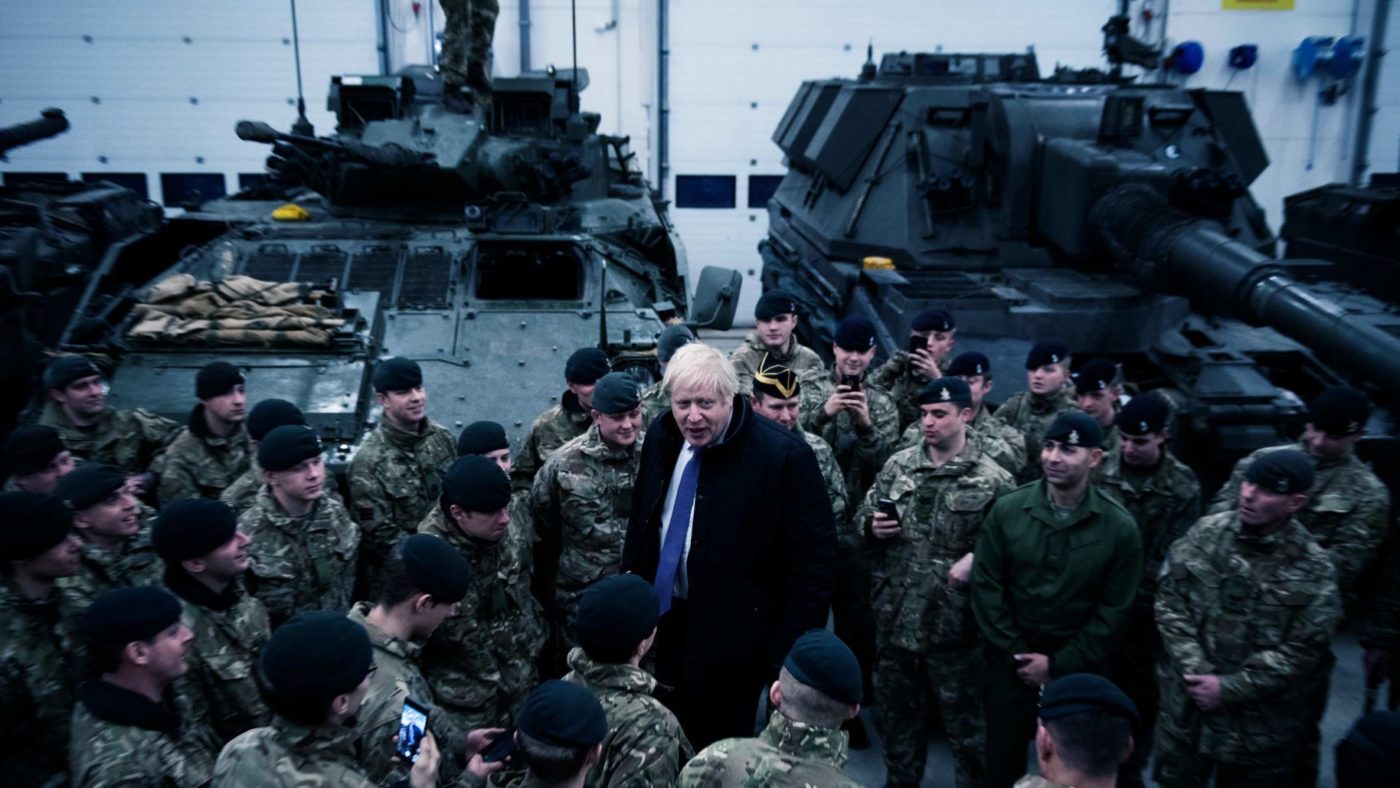“A billion here, a billion there, and pretty soon you’re talking real money” is an American phrase first coined by a Senator during late night machinations to secure pork-barrel spending for their respective states.
In recent years, the more jaded of our Treasury mandarins have taken to repeating it though — reflecting a certain casualness about spending taxpayers’ money in bitesize chunks.
By anyone’s count, though, yesterday’s announcement that the defence budget is to rise by £24 billion over the next four years is big money.
As ever with big spending announcements, this has received a cross-party welcome. It has also gone done very well with the forces, who have spent the last decade in the fear of the Treasury’s Sword of Damocles slicing down to abolish their unit.
Yet, on closer inspection, this review may have just as destructive an effect as its underfunded predecessors. For running through this review is a near sci-fi-esque fascination with the high-tech gizmos and gadgets that will define future combat. It seems to promise no less than a technological revolution of our armed forces.
As part of the review, yesterday, the Prime Minister announced a new space force, 13 new frigates, a new cyber-force, 12 new fleet support ships, a major investment in drones, a new multipurpose research vessel, new laser weaponry, new smart technology for the infantry and special forces, continued support for the Tempest fighter jet programme, and £1.5 billion for defence research, amongst other things. All of this is equipment is to carry a “made in the UK” stamp.
Cuts are coming
The bill for all this will certainly far exceed the £24 billion headline figure. It was no surprise, then, to hear the Prime Minister say that “we will need to act speedily to remove or reduce less relevant capabilities”. This was his way of saying that cuts are part of this strategic review too. While quite what these “less relevant capabilities” are is yet to be determined, there are some likely candidates.
With a focus on a modern fighting force, it is hard to see the Warrior, Challenger and Ajax tank fleets emerging at the same levels as currently envisaged. Likewise, infantry regiments already seem to be being lined up for merging and shuttering, with a new emphasis on fewer more ‘lethal’ capabilities.
The defence estate — a perennial target of reviews — is also likely to come under scrutiny. Is the RAF really going to maintain 32 UK airbases? Is the British Army really going to carry on with almost 100 UK installations?
None of these decisions are, in and of themselves, either surprising or against the natural flow of military evolution. Some may not even be that fiercely opposed by affected members of the services. The troubled Ajax tank platform is branded “overweight, overpriced, overly delayed, and riddled with teething problems” by members of the regiments tasked to operate its early iterations.
Collectively, though, they do leave a question as to the UK’s continued commitment to its longest-standing overseas military commitment: the defence of Europe from Russia. Such a commitment requires a readily deployable force of heavy armour.
These capabilities look set to be degraded as the UK pivots to naval power. This shift is indicative of the Government’s assessment of changing nature of the threat we face. An expanded navy — with a drastically expanded fleet support capability — will allow the UK to play a role in the defence of further afield nations.
Nowhere is that capability more necessary than in the Indo-Pacific where the rising threat of China is an ever-present concern.
The significance of the threat posed by China’s communist leadership is, of course, not something the average reader of a newspaper will have missed. Yet, as usual, it went unmentioned in the Prime Minister’s remarks. For the British Government, China has become a little like Lord Voldemort, the threat which must not be named.
Nevertheless, every new capability announcement was a tool custom-built to tackle the Chinese threat. This is a China review, whether or not it is described as one.
In this sense again, the review represents the natural progression in military evolution. It is a source of rare near-unanimity amongst defence analysts that China, rather than Russia, will pose the greatest threat over the next 30 years.
Next week, the Chancellor will announce where he is getting the funding for this new investment. With Downing Street spokespeople refuse to commit to spending 0.7% of GDP on Official Development Assistance, it seems likely that at least some of the extra money will come from lower aid spending.
This too feels evolutionary.
Since the turn of the millennium, the greatest security threats to the UK have come from zones of chaos – failed states like Iraq, Libya, Syria, Sudan, and Afghanistan. Today though, great power conflict has returned and poses an ever more existential threat.
Aid spending has frequently been justified by its proponents as paying to reduce security threats at their source. As the relative danger of those threats abates, it makes sense to divert resources to the tools best placed to tackle the new ones.
This review then, in its cuts and investment, feels very much like a cash injection built to achieve evolution, not revolution.
Beyond the hi-tech talk of lasers, space forces, and cyber troops this review will leave the armed services better placed to face the conflicts of the future, but not fundamentally altered.
Click here to subscribe to our daily briefing – the best pieces from CapX and across the web.
CapX depends on the generosity of its readers. If you value what we do, please consider making a donation.


